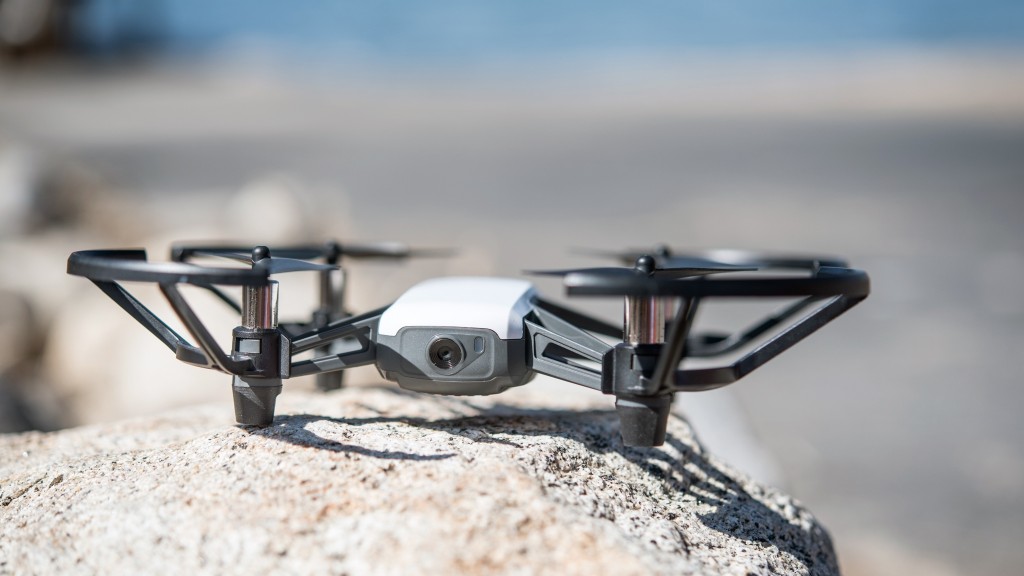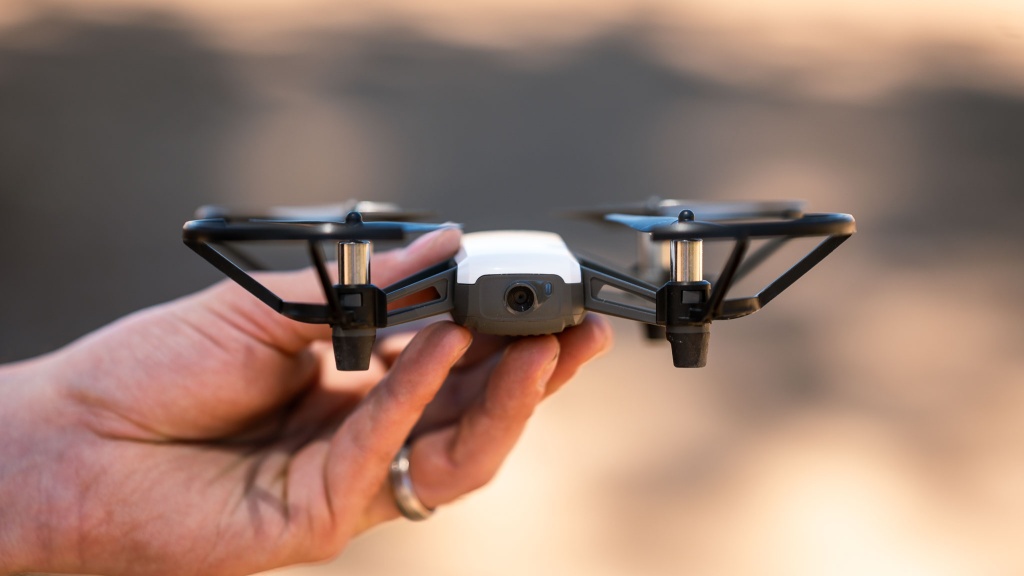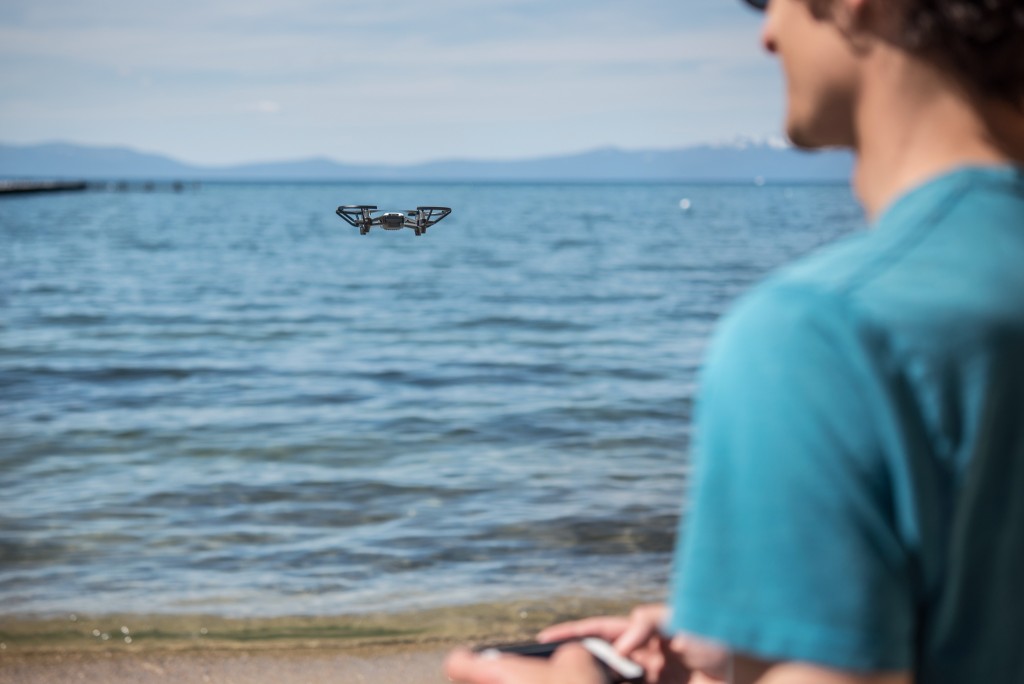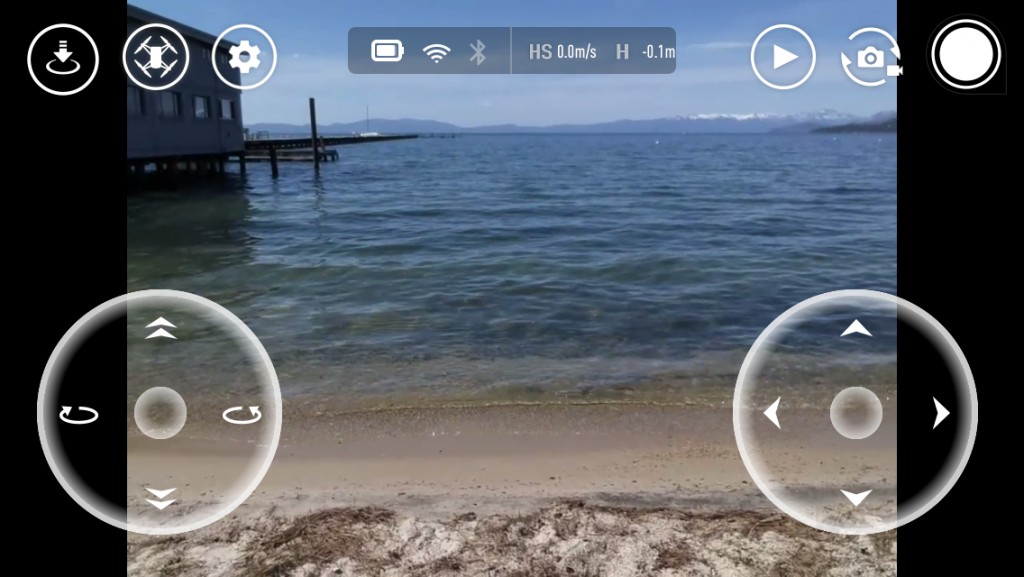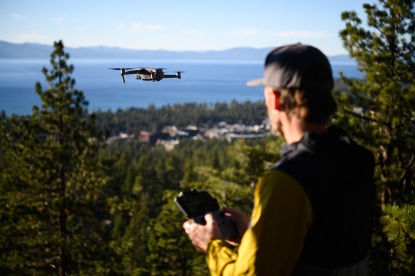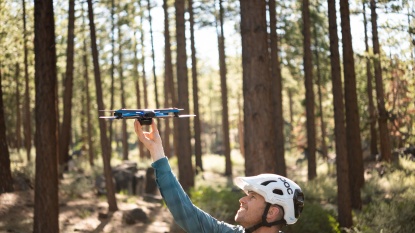Our Verdict
Compare to Similar Products
 This Product
DJI Tello | |||||
|---|---|---|---|---|---|
| Awards | |||||
| Price | $179 List $179.00 at Amazon | $2,199 List $2,199 at Amazon | $2,199 List $1,249 at Amazon | $1,000 List Check Price at Amazon | $759 List $594.00 at Amazon |
Overall Score  |
|||||
| Star Rating | |||||
| Bottom Line | A perfect low cost introduction to flying or incredibly entertaining toy for the kids | A high-end single-person camera drone that maxes out our scoring charts | This compact drone offer fantastic video, responsive controls, and great programming, making it a go-to for serious drone cinematographers | The is a great do-it-all drone that has 5K video, a highly capable sensor, and user-friendly controls making it one step below the prosumer class | A travel-friendly drone that's small enough to take on almost any trip |
| Rating Categories | DJI Tello | DJI Mavic 3 Pro | DJI Mavic 3 | DJI Air 2S | DJI Mini 3 Pro |
| Video Quality (45%) | |||||
| Flight Performance (35%) | |||||
| Portability (10%) | |||||
| Ease of Use (10%) | |||||
| Specs | DJI Tello | DJI Mavic 3 Pro | DJI Mavic 3 | DJI Air 2S | DJI Mini 3 Pro |
| Video Resolutions | 720p | 5.1k, DCI 4k, 4k, FHD | 5.1K, DCI 4K, 4K, FHD | 5.4K, 4K, 2.7K, FHD | 4k, 2.7k, FHD, Slow Motion |
| Weight | .17 lbs | 2.1 lbs | 1.97 lbs | 1.31 lbs | .54 lbs |
| Maximum Speed | 17.89 mph | 46.9 mph | 42.5 mph | 42.5 mph | 35.7 mph |
| Maximum Claimed Flight Time | 13 minutes | 43 minutes | 46 minutes | 31 minutes | 34 minutes |
| Diagonal Size (no props) | 8.12 in | 8.75 in | 8.75 in folded 16 in unfolded |
11.9 in | 6 in |
| Video Format | MP4 | MP4, MOV | MP4 / MOV | MP4, MOV | MP4, MOV |
| Maximum Video Bitrate | 3772 Mbps | 200 Mbps | 150 Mbps | 150 Mpbs | |
| Camera Sensor | 4/3 CMOS, 1/1.3" CMOS, 1/2" CMOS | Hasselblad: 4/3 CMOS Tele Camera: 1/2" CMOS |
1" CMOS | 1/1.3" CMOS |
Our Analysis and Test Results
Among the other budget drones we tested, the DJI Tello is the most capable option we've seen. If you're looking for a wallet-friendly introduction to flying or want a fun drone for your kids to tinker with, this is likely the drone for you.
Performance Comparison
Video Quality
Video quality is worth 45% of the total score of each drone, given that most users will prioritize this metric above all else. The Tello doesn't score as highly in video quality when compared to the top drones, but for its price, it offers functional video depending on your needs. We tested this metric by capturing similar footage with each drone, examining the differences across each video clip with the exact same high-definition monitor.
The camera on the Tello is small and fixed. There is no gimbal to dampen vibration from the drone itself, and you can't angle the camera independently. Fortunately, the flight of this option is relatively smooth in decent weather, helping mitigate the video issues associated with the lack of a gimbal. The small 720p sensor also creates clear images, though they are of a significantly lower resolution than those from larger, more expensive models.
The biggest issue with the footage from the Tello is its choppiness. There is no internal memory where it can save footage; your phone simply saves the footage that gets sent. That feed from the drone to the phone often gets temporarily interrupted, which results in a lost frame in your saved footage. The frequency of this is variable, but generally, for every 30 seconds of footage, you should expect at least two or three points where the footage will suddenly jump forward.
There are also some difficulties with framing video taken on the Tello. Since the camera is completely fixed, you have to move the entire drone to change the shot's framing. You also can't point the camera down towards the ground unless the drone is flying forward. This can lead to some difficulties getting the exact shot you want when compared to models that allow you to move the camera independently of the drone. All that being said, we still think the Tello's video quality is impressive for a drone in this price range.
Flight Performance
The Tello flies quite well but lacks the autonomous flight features, power, and long-range of the more expensive models. This lack of features greatly affected its score in this metric, though it's the best flier of all the inexpensive drones we've seen.
Whereas most models in the Tello's price range require a lot of joystick feathering and intense concentration to get them to hover in place, the Tello can achieve that without any user input. It also moves through the air with similar stability, making it easy to fly in straight lines or to execute flowing turns. This really makes it a perfect training drone for those thinking of upgrading to a more expensive model, as its flight characteristics match that of high-end models very closely. You can take off and land by pushing a button and even perform tricks like barrel rolls.
The Tello can also do a throw takeoff. This fun little feature is sure to amuse kids and adults alike. However, it lacks some capabilities when compared to the models that cost much more. First off, it does not have an internal GPS, so it can't perform autonomous flight functions or automatically return to its starting point. The maximum battery life is 13 minutes, which again is far superior to any other inexpensive drone but is lacking when compared to most of the more expensive models.
The biggest downside of flight performance for the Tello is that it lacks the power to deal with wind effectively. This means you'll only want to fly outside on very calm days and/or at very low altitudes, lest this drone turns into a kite and soars off to an untimely demise. Luckily, its accurate sensors and propellor guards make it great for flying indoors.
The Tello's 720p camera provides a decent quality video downlink to the app. We certainly wouldn't call it high definition, but it is more than serviceable for trying to frame a video or photo. However, the downlink does drop some frames occasionally, so don't be surprised if the video cuts out for a second or two every so often. The range is limited by the wireless network emitted by the drone, so you can only fly it a maximum of 100 meters away from the controller. Here again, this is much better than the incredibly choppy and pixelated video downlinks you get with most inexpensive drones, but it is a clear step behind what the expensive models can do.
Portability
The Tello is very small and weighs only 0.17 pounds, or roughly 77 grams. That's so light that it doesn't even need to be registered with the FAA. However, partially due to that small size, the Tello is easily pushed around by even light breezes. Though you can take it almost anywhere, you won't be able to fly it almost anywhere.
Ease of Use
The bare bones of the Tello user experience, from opening the box to getting it flying, are quite streamlined and simple. Charging the battery, downloading the app, and getting everything paired are straightforward and well outlined in the user manual. You can perform controlled takeoffs and landings at the push of a button, taking the stress out of some of the more delicate maneuvers. Flying the drone is quite intuitive as well. We think even technophobes will have it buzzing around and doing figure-eights on their first day.
The phone-based controller is nice and responsive. However, we had to knock the Tello a couple of points here due to the inherent limitations and difficulties of flying a drone with a touchscreen. First off, your thumbs will be blocking a large portion of the live feed from the camera. Second, touchscreens don't give any sort of tactile feedback, which is crucial if you want to do really precise maneuvers. This can be rectified by getting one of the multiple Bluetooth gaming controllers that are compatible with the Tello app.
The app also lets you adjust many advanced settings, letting you experiment as your piloting skills and interests grow. However, most of these settings are not saved when you exit the app. So, if you find some new settings that you prefer, there's a good chance you'll have to go back in and adjust them every time you fly.
If you encounter any issues, you can initiate a chat with a customer service agent directly from the app. We love this feature, as you can usually get some form of assistance within a few minutes of having an issue.
Should You Buy the DJI Tello?
The DJI Tello is the best drone at its price on the market. It's not quite capable of producing cinematic footage, but it is perfect for honing your pilot skills and for kids who want a fun flying toy.
What Other Drone Should You Consider?
If you're looking for better video quality or flight performance from your drone, we'd steer you towards the DJI Mini 3 Pro, which is portable and extremely well-built. This drone costs substantially more than the Tello, but you get what you pay for. Any other drone at the Tello's price point isn't worth your cash, so we'd go with the approach of “buy nice, rather than buy twice”.








